Piña, Jusi and Filipino Weddings
Perhaps no other fabric material symbolizes Philippine culture best than piña and jusi. Many people mistakenly interchange the two terms, probably because the finished products which they are made of look somewhat similar. But their most distinct difference is in the way that they are made.
“Piña” is the Spanish word for “pineapple”. Piña fabric, regarded as the queen of Philippine fabrics, is, as its name suggests, made from fibers of pineapple leaves woven on a hand loom. Sometimes, they are combined with polyester or silk as they are converted into a textile that is lightweight yet sheer and stiff. Piña cloth, however, is expensive and is thus the fabric of choice for the elite; for those who are very particular about attire worn during very special occasions; and for those who know that the finished product can become a family heirloom. It is expensive for three main reasons: the process is complex, painstaking and intricate process, from the hand-gathering to the weaving; the thread is so fine and delicate; and because traditional weavers are fast becoming a scarcity. The oldest and most popular manufacturers of piña cloth are from Kalibo in Aklan province, whose products are exported to other countries, with the biggest market being in Europe and North America. Piña cloth can be made into other finished products such as mats, table linen, bags, and even paper.
Jusi, on the other hand, is machine-woven. Finished products are also transparent and lightweight. Some jusi fabrics are made of piña and silk threads, but most consist of abaca (manila hemp). The earlier types were also made of fibers from banana leaves, but since the 1960s, Chinese silk organza was used. “Jusi”, in fact, comes from the Chinese word for “silk.”
Piña and jusi are the most popular materials used for traditional attire in Filipino weddings, especially the Barong.
The “Barong” is short for “barong Tagalog,” or, literally, “Tagalog dress”, referring to the Tagalog (Southern Luzon) region, from where the attire is thought to have originated as the customary male Filipino garb since the pre-Spanish era. For present-day Filipinos, the barong’s transparent cloth is enhanced by computerized, machine- or hand-sewn embroidery; more embroidery, in fact, makes the barong more prestigious. Other designs include hand paintings, lace-inserts or appliqués, and pinpricks. It is a button-down shirt, but the buttons on more formal barongs usually only go halfway down the torso, with a short splice at the sides. The collar may come in the lapelled executive style, or in the stiffer and upright Mandarin style.
In a wedding, the barong is usually worn by all the males in the entourage. The groom’s barong, however, is distinguished from those of the groomsmen with more embroidery coverage – on the front, the back and/or the sleeves in “Raya” style. Although barongs can come in shades of different colors, the more traditional and formal ones come in a naturally creamy white color, in long sleeves, and worn with a white undershirt. Groomsmen’s barongs are usually accented by an undershirt whose color follows the wedding motif. Needless to say, most wedding barongs are tailor-made.
As for wedding gowns, Filipina brides opt for locally designed wedding gowns that mix traditional with modern, infusing Filipino culture through the design and fabric used. Piña is also a popular choice, especially for those who prefer its naturally off-white color rather than the more traditional pure white. But since the piña cloth is somewhat stiff, the piña fibers are mixed with more silk fibers. Sometimes, a portion of the gown, usually the bodice, is designed with the piña cloth for added texture. Sometimes, too, the design includes the use of jusi. The gown is then creatively and elaborately accented with beads, embroidery, pearls, lace or even Swarovski crystals.



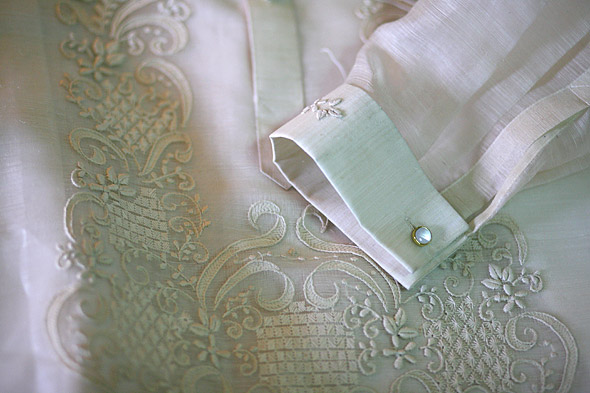
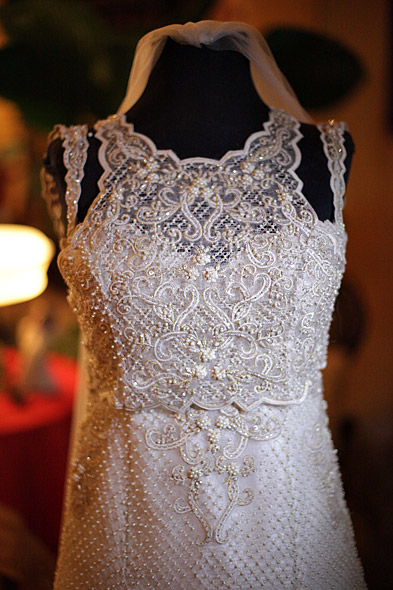
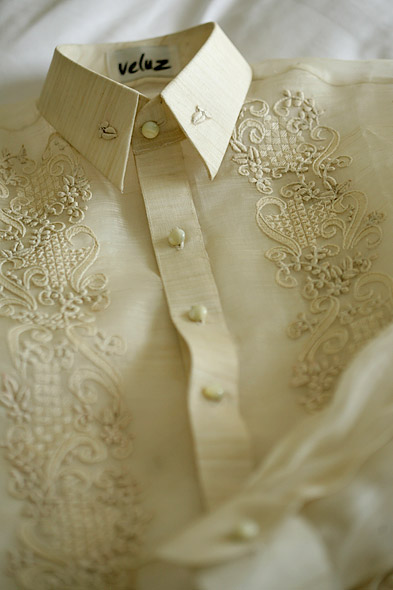
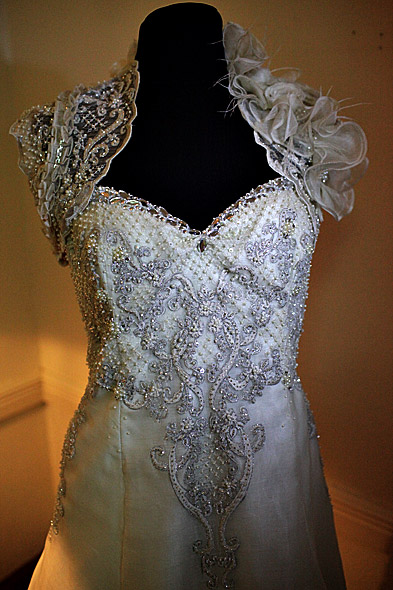
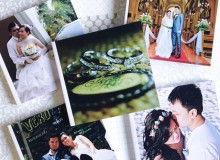

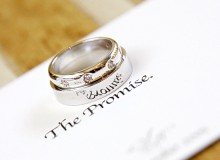
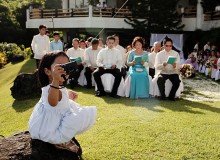

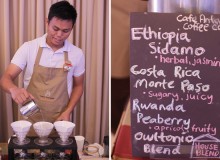

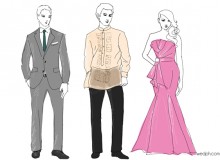
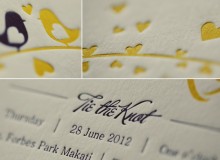
Cathy Ramos
December 11, 2019 @ 12:47 pm
This is the shade of off-white I like! And don’t you think this fabric resembles a capiz shell because of the color and translucency? Great post by the way! 🙂